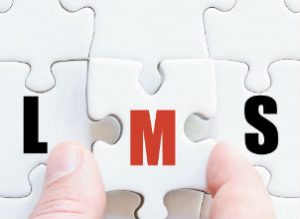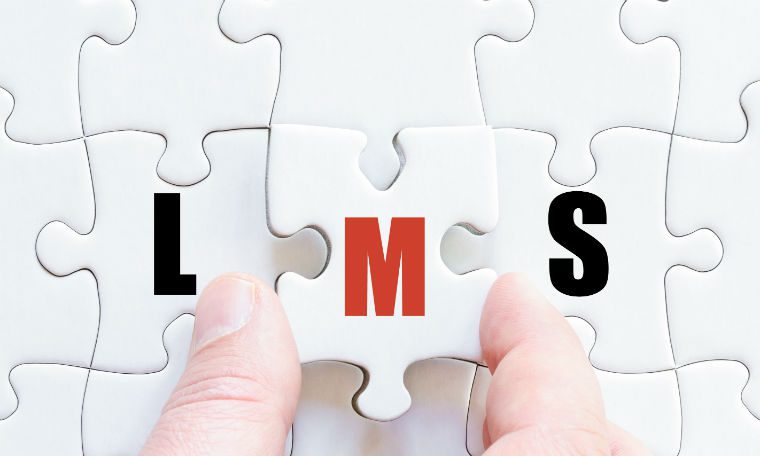 Recently, Carol Leaman wrote an article for this publication in which she proposed that learning management systems are so five years ago. I respectfully disagree.
Recently, Carol Leaman wrote an article for this publication in which she proposed that learning management systems are so five years ago. I respectfully disagree.
“LMSs, the undisputed Goliath of the corporate learning world, are having their lunch eaten by David,” she wrote. “Learning leaders are embracing new platforms that are mobile-first, cloud based, drive voluntary learner engagement and incorporate advancements in cognitive science that map knowledge to how learners best acquire it.”
She said a mouthful. But her argument boils down to this: old technology bad, new technology good. Yes, one or two of the multibillion-dollar vendors that entered the LMS market via acquisition have lost track of their product offerings over the years. But Leaman paints the entire industry with the same brush. She assumes that all LMSs are out of style, that they have not evolved — and cannot evolve — to meet the changing demands of the market, and that only a new e-learning company can give learning professionals what they truly need.
This is a false premise. For proof, let’s look at other markets in the technology industry, such as customer relationship management software. Salesforce came out and disrupted an entire market with its “No Software” campaign and cloud marketplace philosophy. Yes, Salesforce remodeled the CRM space. It redefined the concept of what a CRM system should be and what it should do. Yet all the while it continued to highlight the basic value that CRM technology delivers to business.
Salesforce always understood — and still does — that it’s a CRM company. That’s why Salesforce still competes against Oracle and Microsoft — the CRM old guard — as well as Base — the innovative new guys in the CRM space.
To be honest, I’m still not quite sure what Leaman was driving at when she attacked the LMS. She posited in her article that all an LMS does is convert instructor-led training to web-based training. What she doesn’t understand is that the LMS, vintage year 2000, is radically different from the LMS today.
The LMS market has seen significant innovation over time. Yes, some traditional vendors have evolved more slowly than others. But the technology is far from static. There are vendors that have been in the market for nearly two decades, yet have innovated continuously, updating their LMS offerings. The look, feel and performance of their systems today is very different than they were just a few years ago.
Leaman goes on to argue that organizations are in dire need of a new kind of learning platform, one that features “adaptive and personalized content, microlearning bites to map to how the brain most effectively remembers information, delivery on any device at the moment of need … and analytics to track what the learner knows with the intelligence to tie it to actual behavior and business outcomes.”
That’s funny, because this is exactly what a good LMS system does today.
Modern learning systems come packed with all the tools modern organizations need. In fact, I would argue it is now the organizations that use LMS that have some catching up to do. The top-flight LMSs have come so far so fast that they often outpace the needs of today’s learning professionals. They offer innovations that learning professionals are still discovering and delighting in.
In other words, it’s not a lack of innovation within the LMS market that’s the issue, as Leaman seems to suggest. The LMS is still vibrant. The ball is now in the learning professionals’ court. It’s up to them to harness the broad range of capabilities their LMS offers to drive their business forward.
That’s what leading organizations like McDonald’s and Hyatt Hotels are doing. Hyatt, a large and iconic hotel brand, is using its LMS to deliver state-of-the-art learning to thousands of employees around the world. For instance, Hyatt makes microlearning easy, with short, picture-based training content optimized for mobile devices. The company’s more than 100,000 employees can personalize their learning experiences, and they can connect and reinforce their learning through collaboration and shared success. Better yet, senior leaders now have visibility into the effectiveness of Hyatt’s learning investment.
McDonald’s and its network of independent owner-operators hire more than 1 million people in the U.S. each year. Training and development for new managers significantly impacts the business. McDonald’s leverages its LMS to deliver a robust role-based curriculum — including classroom, modern learning and simulations — to learners.
The company also uses tools integrated within its LMS to conduct virtual meetings and classroom sessions in the cloud. These are important collaborative delivery options often overlooked in LMS assessments. The flexibility of McDonald’s LMS platforms enables local collaboration and increases cross-market efficiencies and consistency to drive learning across its global brand.
Learning professionals at organizations like Hyatt and McDonald’s understand that learning succeeds best when it’s linked to business goals — and when it can directly address problems the business needs to solve. The good news is today’s LMSs have remained innovative and flexible enough to meet those business needs. They offer the technology learning professionals need to accomplish their diverse goals.
Learning is not a battle of David vs. Goliath. That’s a tired argument that the Davids — i.e. the wannabes — have been invoking for years. For learning professionals, the key to success is to understand the many tools in their existing learning management systems — from online collaboration to new mobile and social capabilities — and leverage those features to do amazing things for their organizations. The ability to meet business objectives never goes out of style.
Joe Majors is vice president of global solutions for Saba Software. Comment below or email editor@CLOmedia.com.














